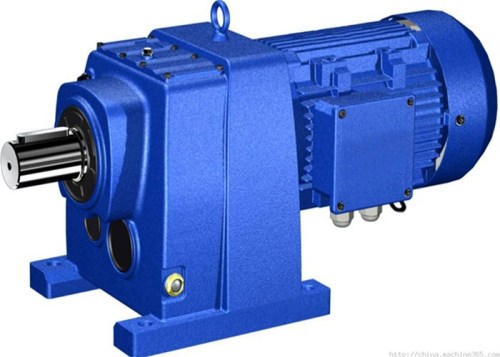 Due to the poor operating environment of the reducer, wear, leakage and other failures often occur. The most important ones are:
Due to the poor operating environment of the reducer, wear, leakage and other failures often occur. The most important ones are: 1. The bearing room of the reducer wears, which includes the wear of the housing bearing box, the bearing hole in the box body, and the gearbox bearing room;
2, reducer gear shaft shaft wear, the main wear parts in the shaft head, keyway, etc.;
3, reducer drive shaft bearing position wear;
4, reducer leakage surface.
For the wear problem, the traditional solution is repair welding or post-plating machining repair, but both have certain drawbacks: the thermal stress generated by the high temperature of the welding cannot be completely eliminated, and it is easy to cause material damage, resulting in bent or broken parts; Brush plating is limited by the thickness of the coating and is easily peeled off. The above two methods are all metal-repairing metals and cannot change the "hard-to-hard" cooperation relationship. Under the combined effects of various forces, it will still cause re-wear. For some large bearing companies, it is impossible to solve them on the spot, and it is necessary to rely on the repair of foreign companies.
For the leakage problem, the traditional method needs to disassemble and open the speed reducer, replace the sealing gasket or apply the sealant, which not only takes time and labor, but also makes it difficult to ensure the sealing effect, and leakage will occur again during the operation. The polymer material can be used for on-site treatment of leakage. The material has superior adhesion, oil resistance and 350% elongation, overcomes the impact of the reducer vibration, and solves the leakage problem of the reducer well for the enterprise.
Non-woven special equipment accessories
Non-woven fabric is a new type of modern material. It has a wide range of uses and can play more roles in clothing, agriculture and industry. The production of non-woven fabrics is also mostly mechanized, which makes it possible to produce a large number of non-woven fabrics in batches. Non-woven fabric winders are one of its equipment.
Non-woven fabric, also called non-woven fabric, is composed of oriented or random fibers. The production of non-woven fabrics often uses polypropylene pellets as raw materials, and is produced by a continuous one-step method of high-temperature melting, spinning, laying, and hot-pressing. In the production of non-woven fabrics, the raw materials need to be spun and formed and then processed. In the web-forming work, a non-woven web forming machine needs to be used. The web forming machine uses wind in the drafting duct to process the silk. After drafting, a machine for non-directional weaving into a net is carried out. However, polypropylene pellets are prone to broken filaments and stiff blocks during drawing, drafting, and web formation. Therefore, in order to improve the quality of the finished non-woven fabric, it is necessary to clean the formed non-woven fabric. When dealing with broken wires and stiff blocks in traditional web forming machines, workers usually use brushes or scouring pads behind the web forming machines to clean up. Because the belt width of the web forming machines is relatively long, and the conveyor belt speed is relatively high at the same time. Fast, the cleaning range that workers can cover is limited, resulting in low cleaning efficiency, which in turn affects the quality of the finished non-woven fabric.
The slitting machine is mainly used to cut large-format non-woven fabrics into multiple small non-woven fabrics of different widths for processing non-woven products. The equipment adopts DC speed regulation, feeding constant tension control, air knife slitting, rewinding pressure and other devices. The rewinding tightness after slitting is adjustable, and the slitting end surface is flat. The equipment is of high quality and beautiful appearance. It is the ideal equipment for the slitting of large non-woven fabrics. In addition, according to the needs of users, the equipment can also add a dummy cutting function, that is, the original fabric is dummy cut and then slit and rewinded.
Non-woven fabric machinery is a general term for the production of non-woven fabric products, and adopts an overall modular design with a compact and reasonable structure. The control part adopts advanced PLC microcomputer control, and the international famous brand frequency converter speed regulation.
Non-woven fabric high-speed slitting machine, non-woven fabric high-speed winding machine, non-woven fabric high-speed web forming machine, non-woven fabric upper and lower stretcher
Changzhou Puyisen Machinery Technology Co., Ltd. , https://www.smmsmachine.com